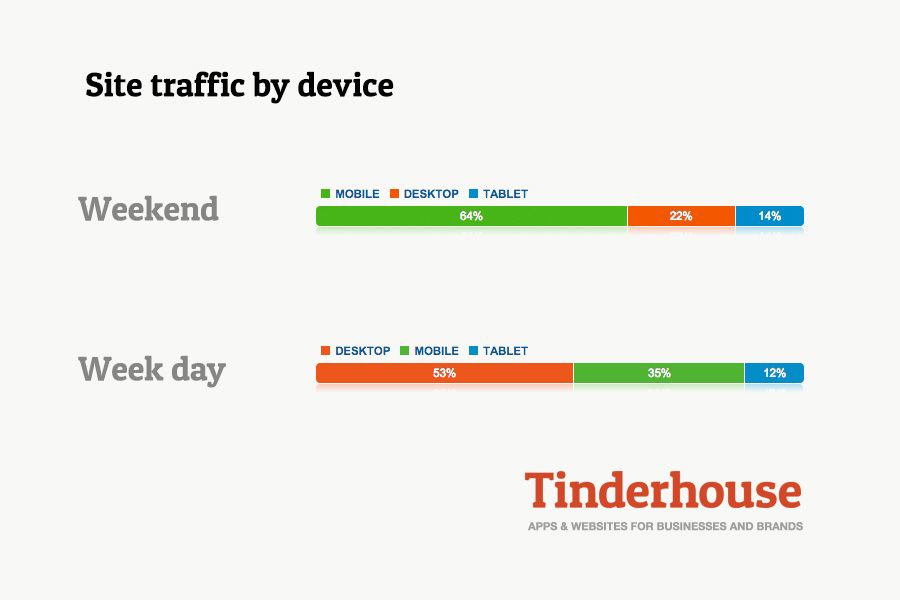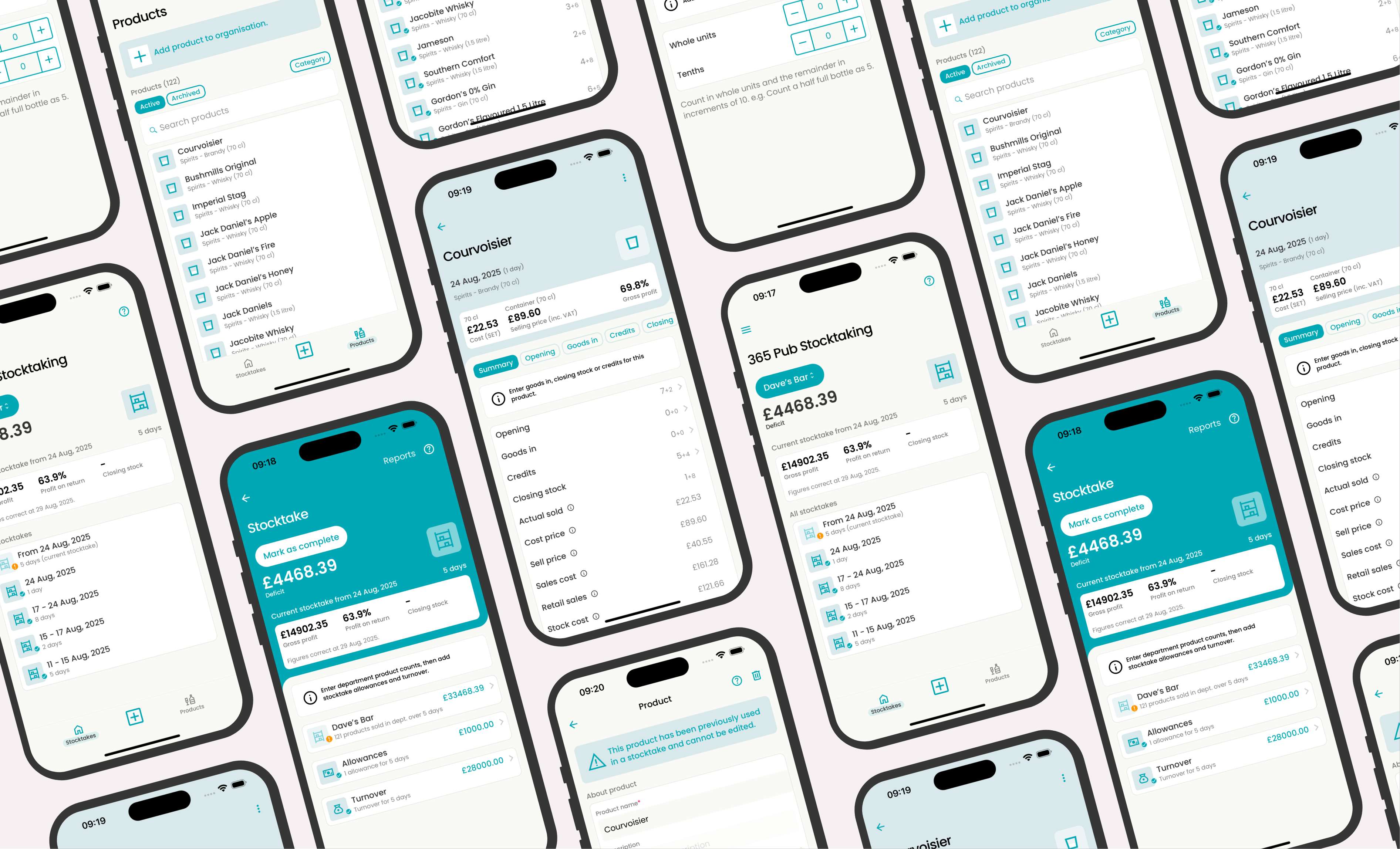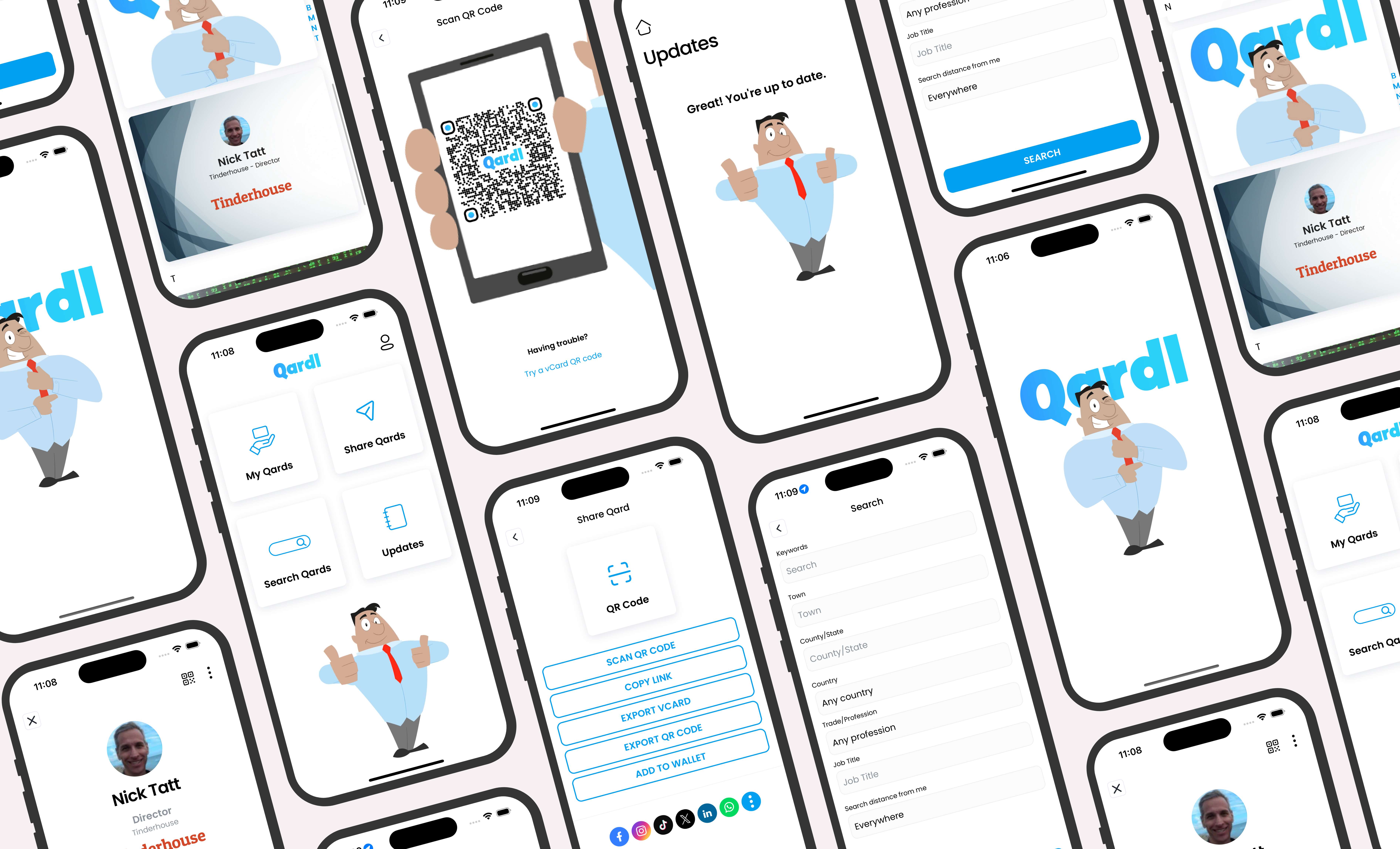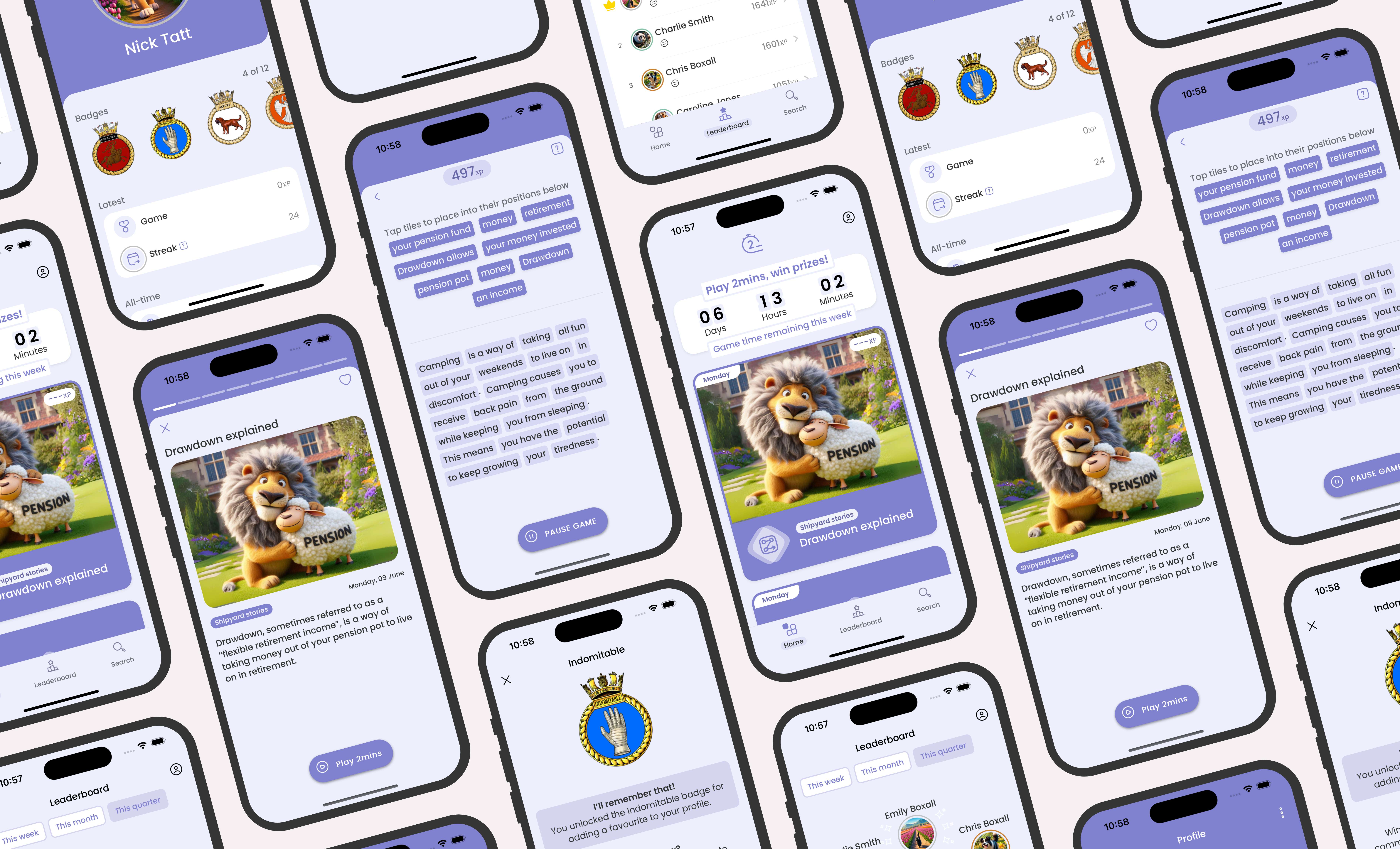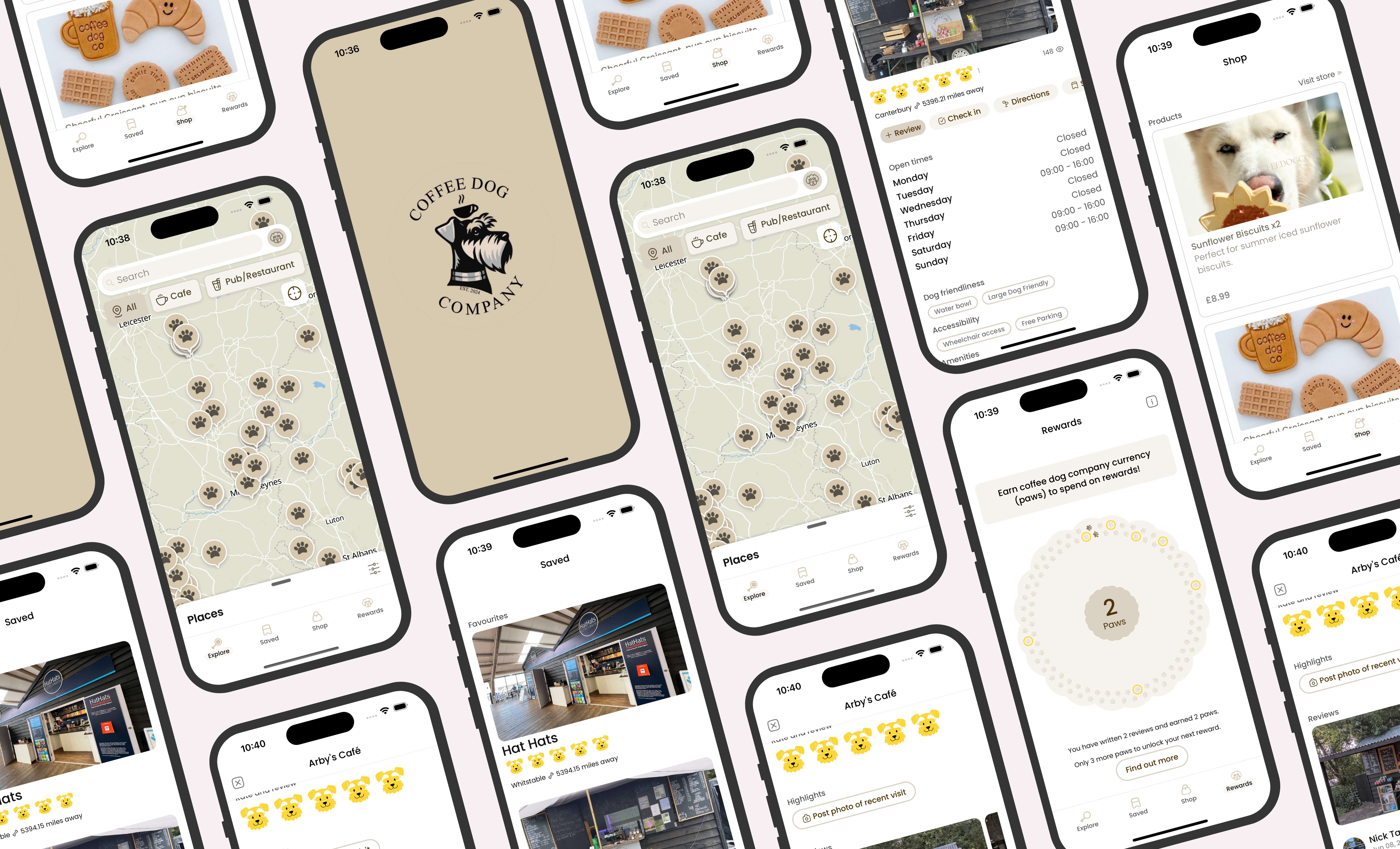Tinderhouse recently launched Vote Match which was designed as a mobile-first web app. Since its launch, we have been monitoring how the service has been performing across desktop, tablet and mobile, and the results are fascinating.
Vote Match is a simple quiz to help you to find the political party closest to your views. From the start of the project we had mobile users in mind and, in turn, made sure that the desktop experience was just as rich. By taking a mobile-first approach we could also ensure that the web app was easy to engage with across social networks.
Device patterns
Through our analysis of the Google Analytics statistics, we have been observing some strong trends around the use of mobile devices. The statistics have validated our mobile-first approach and some interesting patterns have developed. The site has a natural ebb and flow of mobile devices throughout the day. The trends break down into obvious but crucial periods that each have a bias.
- Early morning - mostly mobile
- Daytime - mostly desktop
- Evening - mostly mobile
- Weekend - mostly mobile
What we mean by mostly is that over 50% of visitors are on either mobile or desktop at any time. Throughout the day, there is a consistent minority of tablet users.
The early morning bias on mobile devices can easily be explained by people's daily commute to work or catching up on news over breakfast.
The daytime bias to desktop has an equally obvious explanation: most people have arrived at work and have settled down in front of their desktop computers.
The evening bias back to mobile devices starts with peoples' commute home and continues throughout the evening.
The weekend bias to mobile devices helps to validate our mobile-first approach. It's quick and easy to take the quiz, which in turns drives more social network sharing and more users.
Embedded in social networks
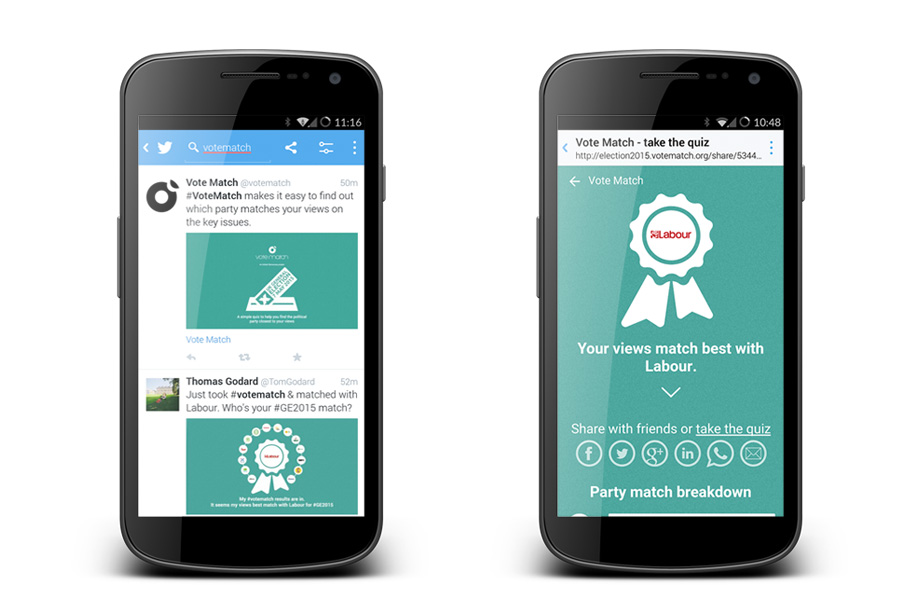
We have found that many users are experiencing Vote Match entirely within Twitter's own app. As you would expect, Vote Match lets you share your results on Twitter or Facebook. The social media shares include a link inviting the reader to take the quiz themselves. When following this link from within the Twitter app, it loads Vote Match directly within Twitter's own app and, since it's mobile first, the user can get straight down to taking the quiz themselves. All within Twitter's app.
This has been a key driver of the mobile device statistics and has helped Vote Match to gain traction across social networks. By keeping the experience within Twitter, the quiz has been taken by more users who in turn share with more users.
Three key messages to take away
1. People will be using multiple devices to access your website. It's now a fact of life! The device may change over the course of any given day but the experience should be maintained.
2. Don't be scared of taking a mobile-first approach on your next web project. There are clear benefits when it has been designed into the project.
3. Keep the transition between social media apps and your website seamless and, where possible, don't transition users at all.
